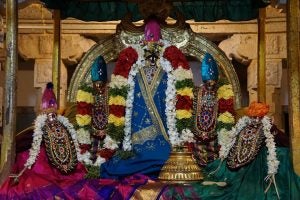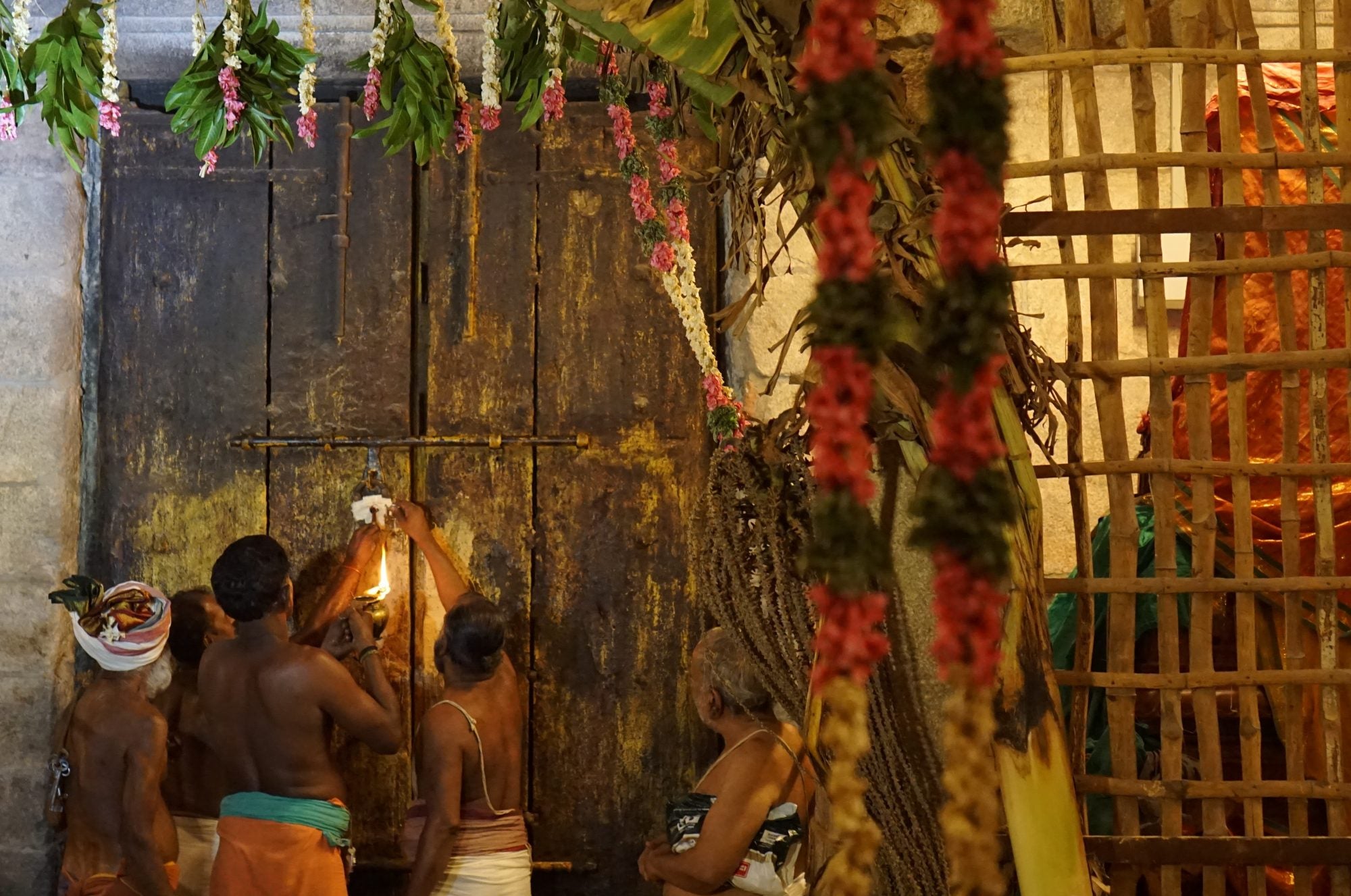I was told that the crowd would dissipate after Vaikuntha Ekadasi. This happened not to be the case. While it wasn’t anywhere as crowded as on the 29th, there were still a lot of people in a very small place.
It’s a very different experience listening to the Divya Prabandham recitation in the Ira Pattu Mandapam. For one, it’s a longer space, and it’s enclosed. As Nambi processes, the gosti recites the Iyarpa as they walk with him. This is impossible to hear as the drums are beating and the nagasvaram blares. You hear snatches here and there–an evocation, an invocation, a lament, a sigh. The Tiruvaymoli itself is recited seated after the Tiruvaradhanai, a reversal from the procedure in the first half of the festival. The sound of the crowd drowns out the recitation, so one needs to be close to hear it. The gosti recites the text with exquisite, liquid fluency. The inherent metrical, rhythmic quality comes through beautifully, and I was particularly struck at how clearly you hear the antati–each word pushing into the next, one wave cresting into another. The recitation brings alive the infinity loop that is the Tiruvaymoli–its endlessness, its beginningless-ness. I thought about this yesterday as I sat listening to it, and how the whole Ira Pattu festival recreates this fundamental, elemental structure of the text itself. It’s a loop, and as we pass through the doorway day after day, it’s like we are living in the Tiruvaymoli itself.
There are no spectacular alankaras for the next ten days. “Just” the usual imperial presentation (Rajangam). The emphasis has clearly shifted to listening and hearing in a very different manner. Over the next ten days, Vishnu and his four goddesses wear little caps to keep them warm in the chill of Margali. A different one every night. Vishnu gets a warm shawl as well. I asked if they use the same caps and shawls every year. In response, I was informed that a lady in Delhi had made them all this year–gorgeously embroidered fabrics, sparkly textiles and the sweetest little velvet hats.

